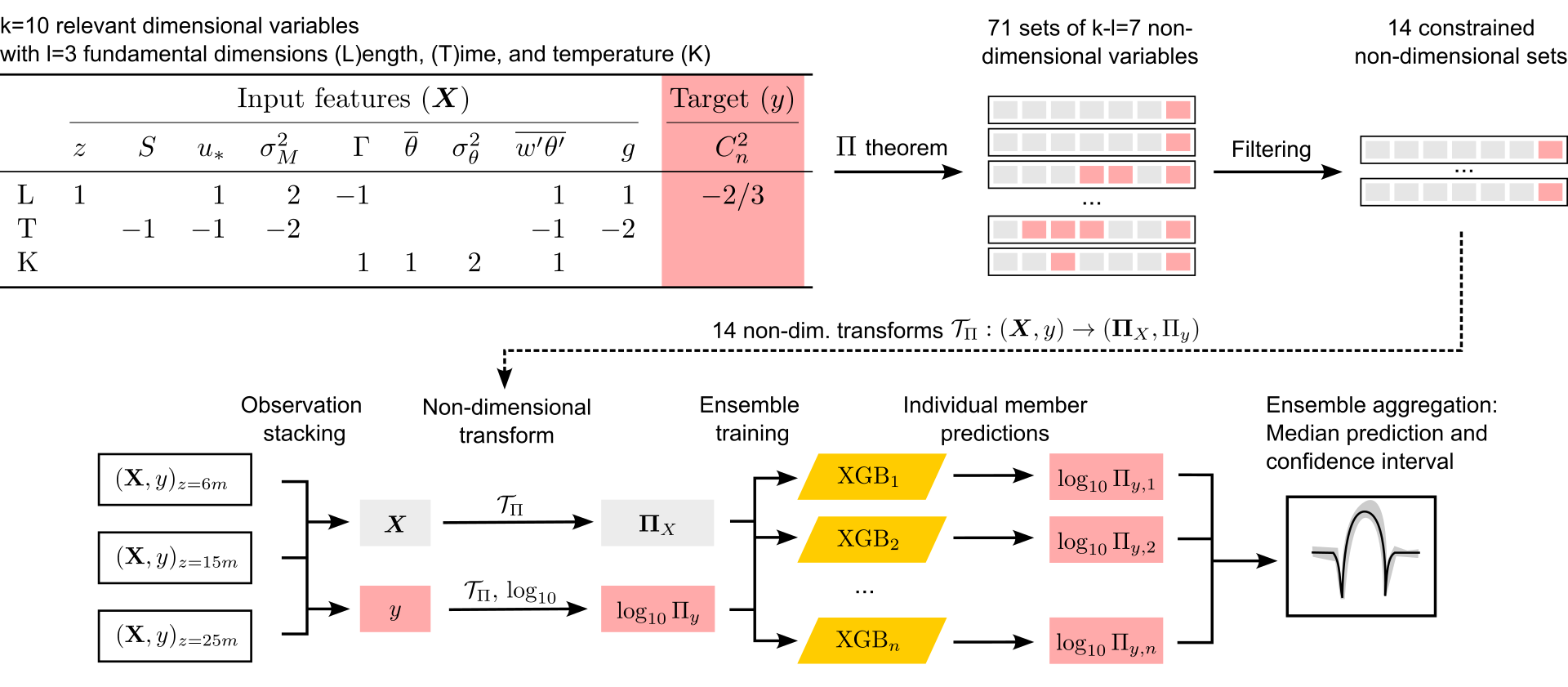
Turbulent fluctuations of the atmospheric refraction index, so-called optical turbulence, can significantly distort propagating laser beams. Therefore, modeling the strength of these fluctuations ($C_n^2$) is highly relevant for the successful development and deployment of future free-space optical communication links. In this letter, we propose a physics-informed machine learning (ML) methodology, $\Pi$-ML, based on dimensional analysis and gradient boosting to estimate $C_n^2$. Through a systematic feature importance analysis, we identify the normalized variance of potential temperature as the dominating feature for predicting $C_n^2$. For statistical robustness, we train an ensemble of models which yields high performance on the out-of-sample data of $R^2=0.958\pm0.001$.
Open access version on arxiv: https://arxiv.org/abs/2304.12177.